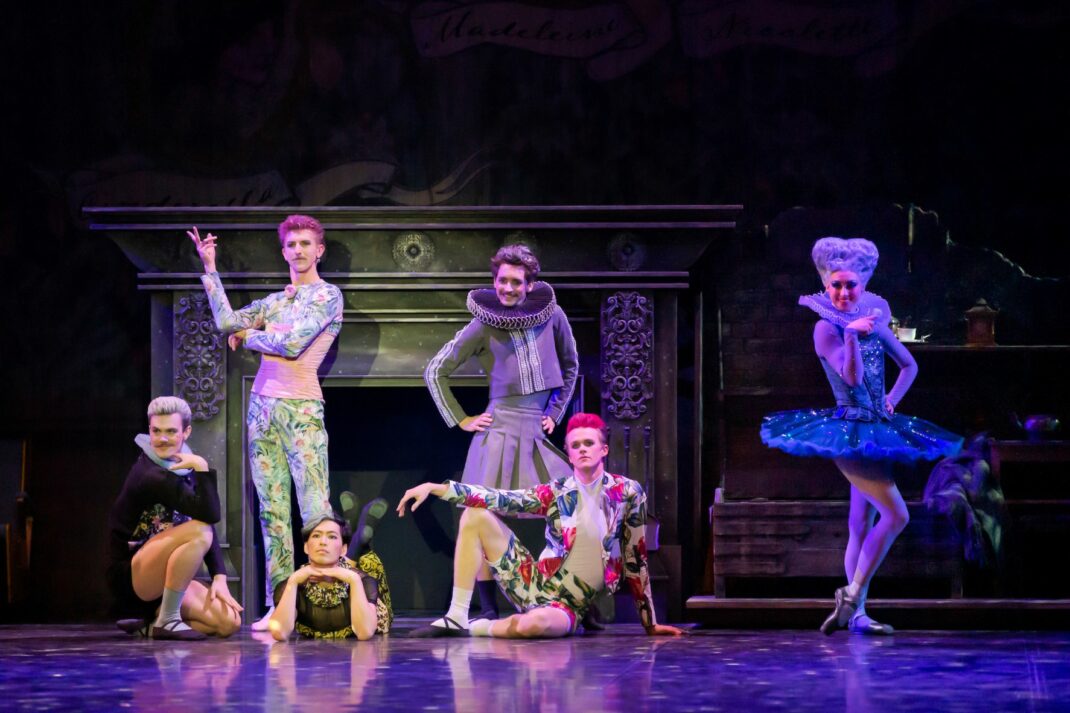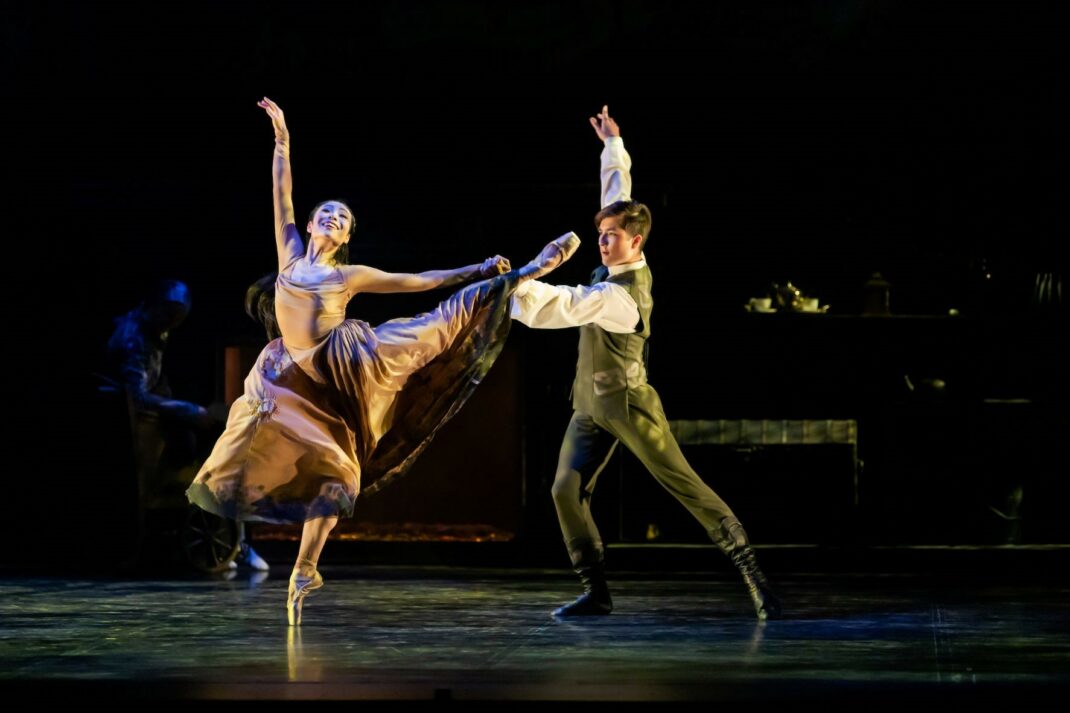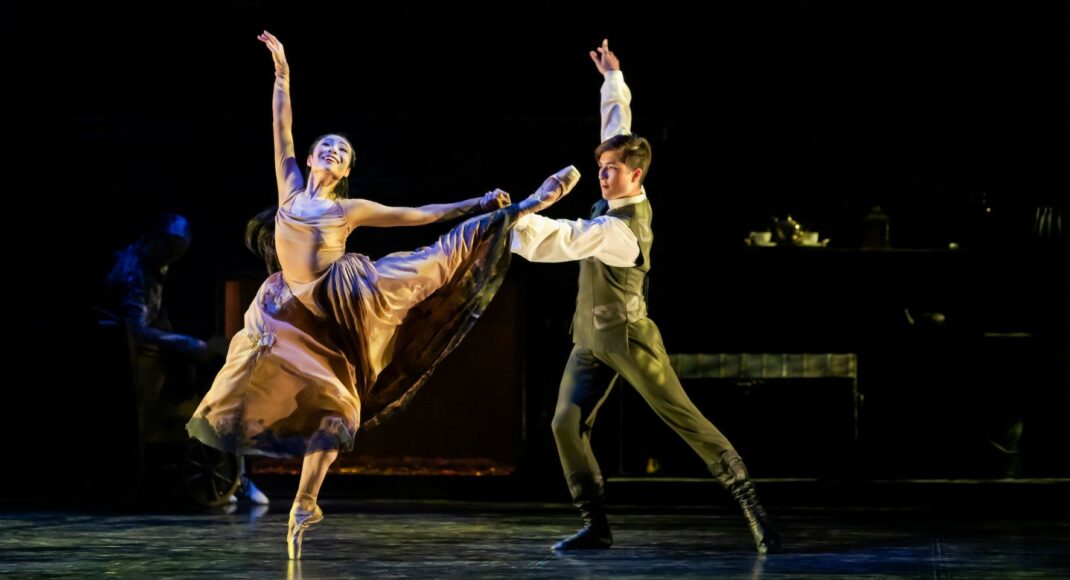10 August 2022. Kiri Te Kanawa Theatre, Auckland
Choreographer Loughlan Prior was born and educated in Australia before moving to New Zealand for further dance training. He is now a dual citizen of those countries and his latest work for Royal New Zealand Ballet, where he has been choreographer in residence since 2018, is a production of Cinderella. But it is Cinderella in a whole new guise.
Many of the basics of the storyline we know from traditional productions of Cinderella, even from a few more up-to-date productions, are still there. Cinderella is still subject to bullying and other poor behaviour from the two Step-Sisters and is pushed into compliance by the Stepmother. She still goes to the ball aided by a Fairy Godmother, and the shoe (a pointe shoe as it happens) that is left behind after the ball finds its way to her home (and fits, of course).

But Prior has looked beyond and beneath the well-worn narrative and has created a ballet that investigates the notion of having the courage to follow one’s dreams and desires in whatever form they may take. Cinderella (Mayu Tanigaito) doesn’t marry Prince Charming (Joshua Guillemot-Rodgerson). He has found love elsewhere with another Prince, Prince Dashing (Shae Berney) from a neighbouring kingdom. The question of sexual orientation is probably the major change Prior has made to the storyline. As for Cinderella, she finds her happiness with the Royal Messenger (Laurynas Véjalis), whom she first meets when he comes to her home with invitations to the ball.
Prior’s Cinderella moves the audience well into the present day, and not simply with the focus on sexual orientation. There are moments when present day fashions for living and entertainment are introduced. In a scene where Cinderella chooses a ball gown we meet the Fab Five, five outrageously garbed gentlemen who act, in a way, as influencers. But perhaps the move to the present is nowhere more apparent than in the final scene at the ball where by the end of the evening alcohol and drugs have been consumed to the extent that some, the Step-Sisters (Sara Garbowski and Kirby Selchow) for example, are somewhat the worse for wear.

And yet there are times too when Prior asks us to look to the past. Before the ballet begins the stage space (with curtain raised) is occupied by a large structure representing a tapestry weaving machine. There three adult dancers and eight or so young children (child labour?) are busy at the machine. We are reminded that in times past stories were told on large tapestries that filled the walls of stately homes. ‘Cinderella’ is the the word being woven and we see this as the house lights go down and the ballet begins.
Prior’s choreography for this ballet covers a range of styles from classical (or perhaps neo-classical is more appropriate) to the crazed disco-style movement that we see in the final ‘Happily ever after’ scene. Highly memorable were the four duets between Cinderella and the Royal Messenger, which grew in intensity as their relationship blossomed. Similarly the duets between Prince Charming and Prince Dashing showed, in choreographic terms, an equality between the two men. Each had moments of partnering and being partnered.

One of the great strengths of the work was the way in which Prior has developed the various characters so strongly, and how, as a result, the way the dancers rise to the occasion with extraordinarily believable performances. Véjalis stood out for me as the Royal Messenger. He held his body proudly and there was just a subtle lift of the chin and a lilt in his walk that gave him a charm that was somehow quite seductive. No wonder Cinderella fell for him. I also enjoyed the performance by Paul Mathews as Cinderella’s father. The role of the father is often not well-developed in productions of Cinderella but here we understood his plight and rejoiced when Cinderella came to his rescue and allowed him the freedom to be a well and happy man once more. Ana Gallardo Lobaina was a vindictive Stepmother and her performance drew out a spiteful, hateful nature.
I enjoyed the full-of-fun scene when Cinderella chose the dress that she was to wear to the ball and the final moments when she was lifted off the floor and rose into the space above wearing the magnificent, Spanish-style, golden gown of Emma Kingsbury’s design. Kingsbury’s design was an absolute highlight throughout and was as diverse as Prior’s choreography and character development.
But perhaps the most moving scene was that when Cinderella and Prince Charming were alone on stage, each dancing separately and each recalling the lives into which they had been drawn and from which they longed to escape. It was not only beautifully and movingly danced but was lit by Jeremy Fern so that the two dancers were seen as separate people but, as we could see from the projections that appeared in the background, with similar problems that they needed to overcome.
The score for this Cinderella was commissioned from Claire Cowan, who has worked before with Prior and with whom he shares a strong collaborative aesthetic. It too was diverse in musical styles and influences. It had a strong percussion component and a lot of brass, but at times looked back to medieval sounds, Baroque court dances and a host of other new and old musical allusions.
Prior calls this work ‘maximalist’ and it certainly wasn’t minimalist, not choreographically, not musically, not thematically, not in design which included some great visual effects from POW Studios, not in any way. I found some parts of the work, especially the way the Step-Sisters were portrayed, somewhat overdone, and audiences need to be prepared for the unexpected. Audience reaction on opening night in Auckland varied and included spontaneous clapping along with the music and dancing at various times, as well as a few people not returning after interval. Only several viewings would allow us to appreciate and follow fully the extraordinary diversity of ideas that fill the work. There is no doubt that we will never see another Cinderella like this one.
MIchelle Potter, 13 August 2022
A shortened version of this review appeared in Dance Australia. Follow this link.
Featured image: Mayu Tanigaito as Cinderella and Laurynas Véjalis as the Royal Messenger. Cinderella, Royal New Zealand Ballet, 2022. Photo: © Stephen A’Court

